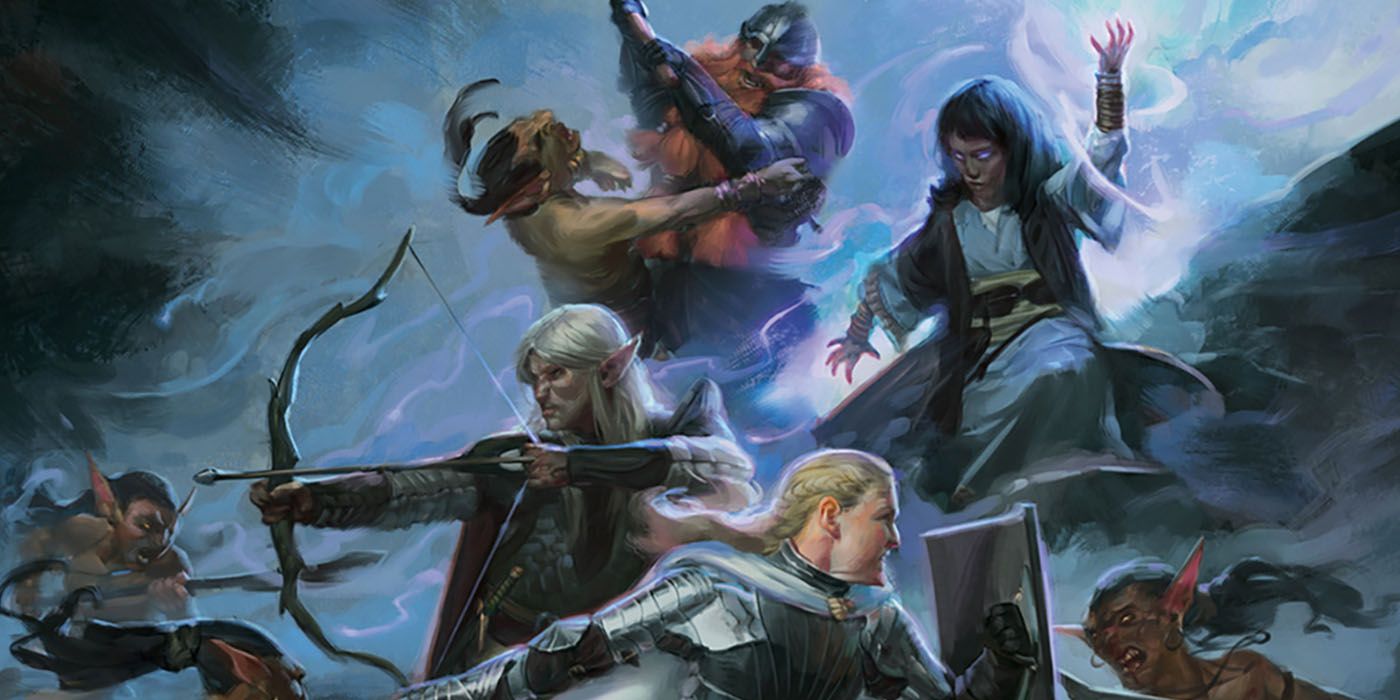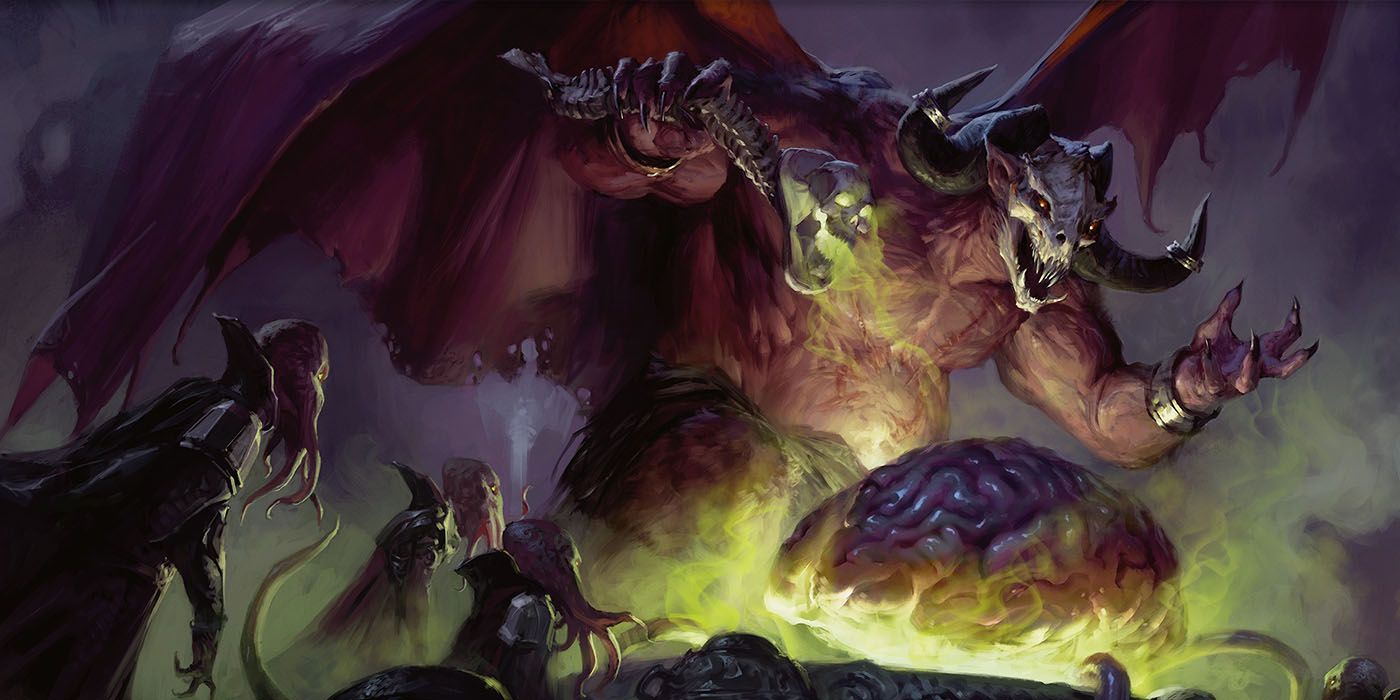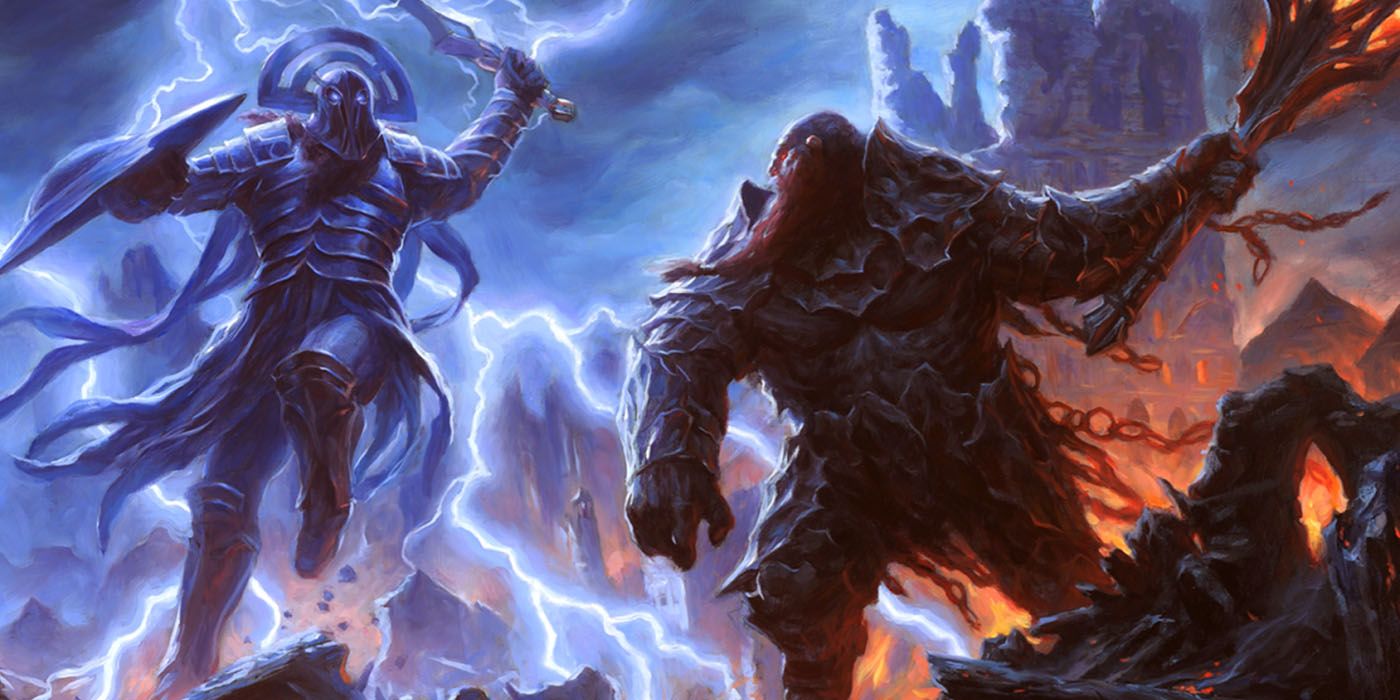Combat is an interesting element in Dungeons & Dragons. It's already fun, or D&D wouldn't be as outrageously popular as it has become, but combat can still be a vastly different experience depending on the DM that runs it. Going purely off of the Player's Handbook and 5th edition's basic rules, combat is an entirely mechanical thing but given a little extra effort from the DM, it can be a whole lot more than that too.
The fact is, D&D's basic rules don't exactly tell DMs how to keep combat interesting--only how it works. Every DM (and player) out there knows what it feels like to be caught in a combat encounter that just seems to drag on forever; the dice rolling alone can put everyone to sleep, turns take way too long, and within a couple of rounds, any sense of urgency over what's happening in the story has more or less evaporated. That's the last thing a DM wants when they're trying to keep D&D players invested in the campaign's plot, so here are a few tips in crafting a dynamic combat encounter that the DM's Guide doesn't cover.
Change Up the Enemies
When the party is fighting a homogenous group of enemies, it's easier for them to form a strategy and stick to it for the duration of the fight. A pack of wolves, a troupe of bugbears, or a long owlbear could take some effort to bring down, but it wouldn't feel very dangerous or suspenseful. The party could stick to whatever combat configuration they've fallen into without really having to strategize or work together to bring down the minsters; they can each just do their thing without relying on one another. But if the bugbears suddenly called in a troll a round or two into the fight, cutting right between the tanks and ranged spellcasters? That would force everyone to think on their feet, and suddenly their movements would need to be much more coordinated.
It's also not just the appearances of the monsters that should change: it's their numbers and their abilities too. A DM sick of players slicing through their monsters like nothing can give the next group of weird D&D monsters an extra layer of skin in the form of damage resistances or even pack abilities that amplify with a bigger group. Or, add a monster with abilities that'll throw the party off by rendering one of its members unable to fight. Some have psychic powers that could even dominate a PC, turning them into yet another enemy that the party then has to figure out how to deal with. The monsters can have weaknesses, too, but a combat encounter that forces players to experiment with their attacks and figure out what works and what doesn't is going to engage them far more than a simple goblin ambush.
Have enemies with totally different abilities enter the fray halfway through, or mess up the terrain to change the layout of the battlefield. Give the party consequences for wanton destruction--maybe a monster has taken an NPC hostage, so any PC that hurls a fireball at them anyway will definitely take a hit to their moral alignment. If each player character ends an encounter feeling like they probably would've been okay even if caught alone, then the encounter hasn't added any weight to the D&D campaign. If each player ends the encounter knowing that each of them played a crucial role in the party's collective success and survival, then that's when the DM knows they've put together a battle that their players will remember.
Play Up the Terrain
Building off of the previous suggestion, DMs can turn the terrain that the party fights on into a compelling enemy in itself. Most battlefields are, by default, fairly flat and straightforward, whether or not they're on a literal field or inside a cave. But what if the DM placed a cliff beside one edge of the battlefield, or covered patches of the ground in sharp gravel or ice to turn the terrain difficult? Caves could have a pool of magma or a body of water. Regardless of the environment and even the D&D setting, there's a way to give players a dynamic battleground.
The terrain also doesn't need to have elements that are solely obstacles; a ruin could have pillars to potentially climb or take cover behind, and forest fights could take place, in part, up in the trees. It's not that players need to struggle with the terrain to make it interesting, it just has to be terrain that gives players more to work with than flat, boring ground. When the environment around the party gets incorporated into battle, either for good or for ill, it's another factor that forces players to strategize instead of going through the fight on autopilot.
Add a Few Stakes
One way to get players fully engaged with the game is to light a small fire under their toes. Give them a reason to coordinate, finish the battle quickly, or split their efforts between fighting and some other objective. Players begin most of their combat encounters knowing exactly what their very simple objective is: step one, fight; step two, kill all the enemies; step three, profit.
So instead, change the objective. Maybe the party needs to kill all the enemies while defending some weak yet undeniably likable NPCs from their focused wrath, or maybe half the party needs to hold off enemies while the other half works out a puzzle. When giving the party a regular old bounty, tell them that their opponent has to be brought in alive, and take away their ability to be murder-hobos that gleefully sling their area effect spells with reckless abandon. Force the party to change the abilities they use with each battle, instead of letting them play the exact same way every time. Even better, put them on a timer: they've only got a certain number of rounds before the corrupt city guard arrives and outnumbers them beyond any hope of victory, or perhaps they need to finish the battle in less than five rounds because more enemies arrive during each and they'll soon be overwhelmed.
For another tip, DMs could sow a bit of conflict into the party before a fight by offering them mutually exclusive objectives, meaning the party can only accomplish one goal that they won't necessarily come to a unanimous decision over. Construct a fast-moving chase scene, where combat is played out as one side tries to flee from the other, or pit the two sides in a race against each other to reach some nearby goal. When players know that they'll have to accomplish something different with each fight, they won't sleep on strategy; instead, players will be alert and waiting to discern which strategy of many they'll need to employ based on the situation at hand.
Make Each Player a Star
Finally, one easy way to keep players wanting more is to tailor the combat specifically towards one character's abilities. It's not supposed to be a guarantee of success, a change in the rules, or an attempt to railroad the player into acting only one way over the course of the adventure. Simply design a scenario where that class's talents will unavoidably come in handy one way or another, and give that player a chance to feel like they're valuable to the party.
Obviously, every party member is valuable in actuality, but when every fight leans toward the same type of ability, the other players won't feel as accomplished. Given the chance to roleplay being the hero of the day, a chance to shine and show comrades what they're capable of, then every player walks away from the campaign happy. Sure, people are always told when they're kids that showing off is tacky, but let's face it: everyone needs to show off every now and again, just enough to keep a sense of confidence within themselves--and yes, that applies to D&D characters too.
Through a combination of the above elements, players will stop going into every fight with the same old expectations already in place. They'll be interested to see what's coming because it won't be the same as what they did during the last session. Not every combat encounter needs to be the same difficulty or length; some can be quick encounters meant to feel easy while really whittling PCs down before the big one, and some can take a full two hours to complete. Ultimately, the key to making encounters engaging is just making a change, and that will keep the D&D campaign going.
DMs and players alike don't need to be afraid to experiment with different battle scenarios and ability usage. The variety is what makes each D&D campaign's combat encounter feel unique and exciting, and that's where the fun is found.



